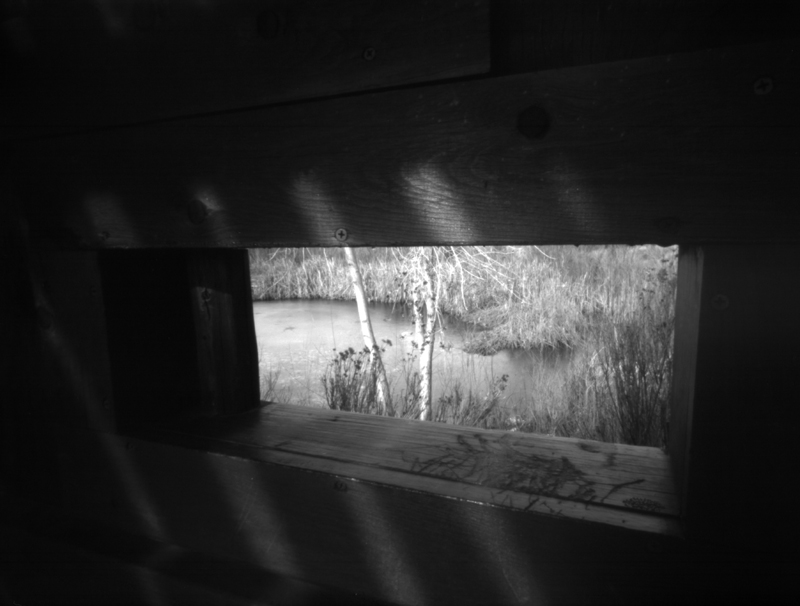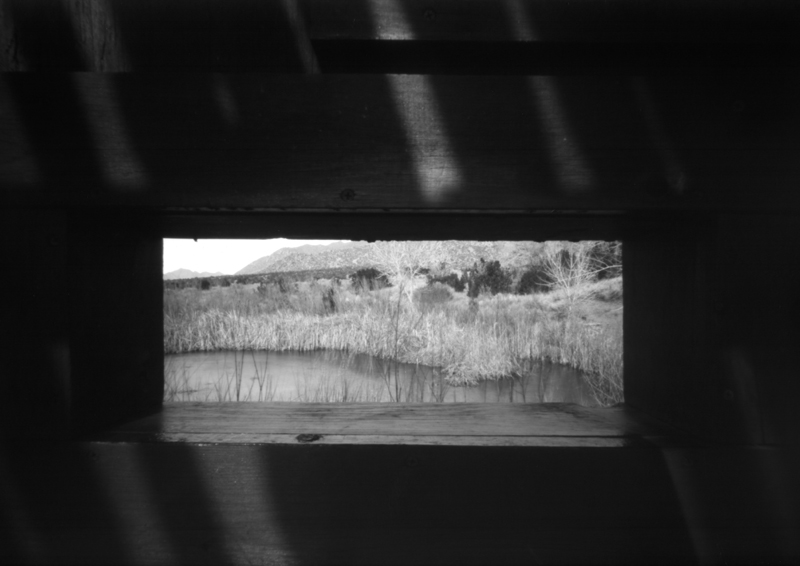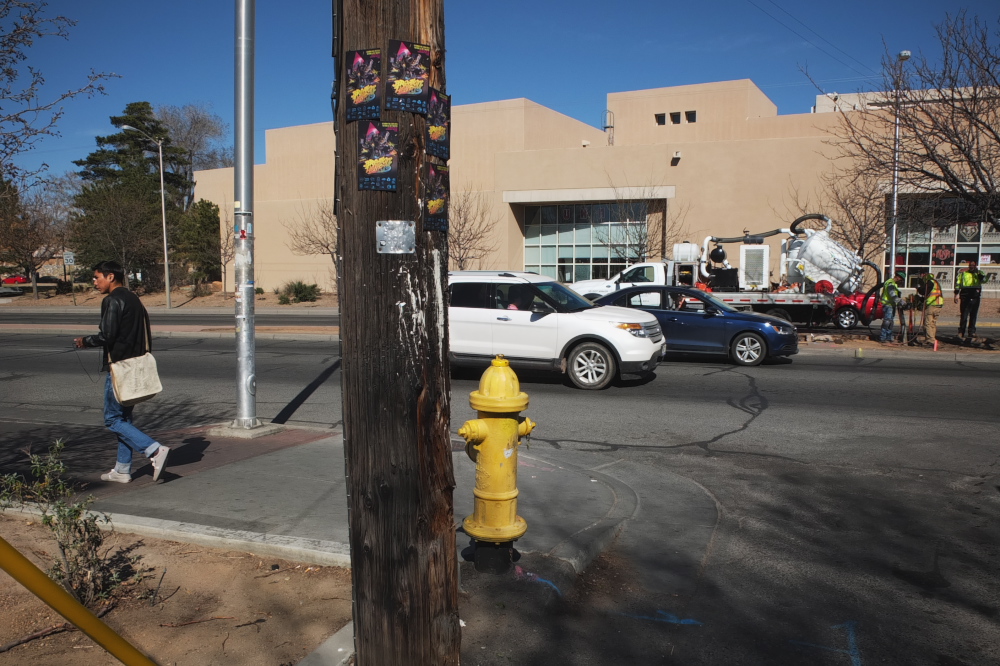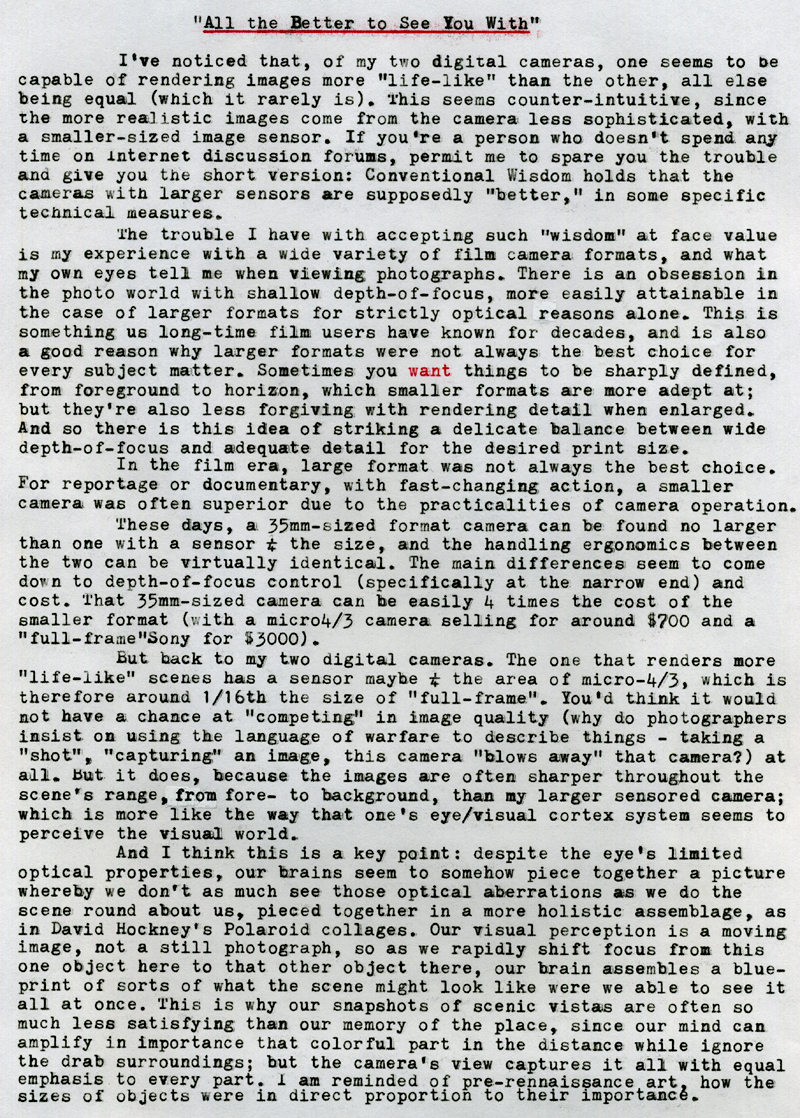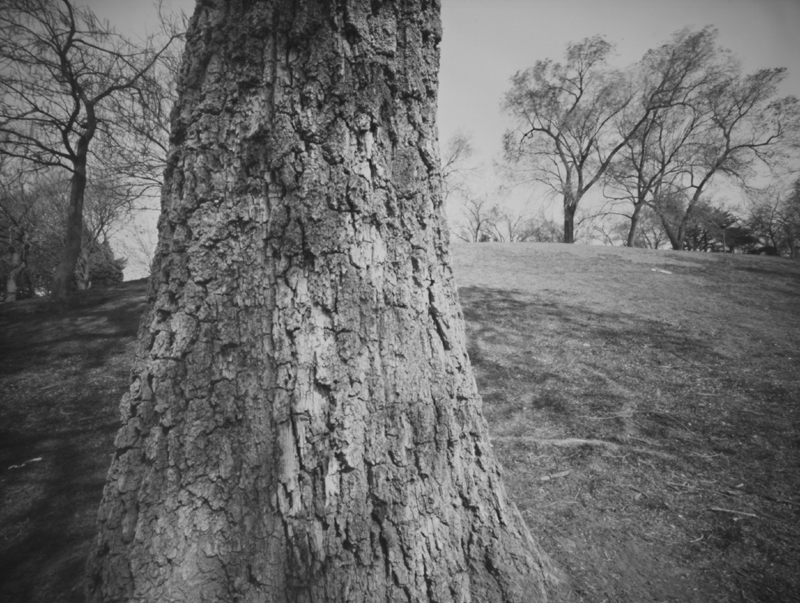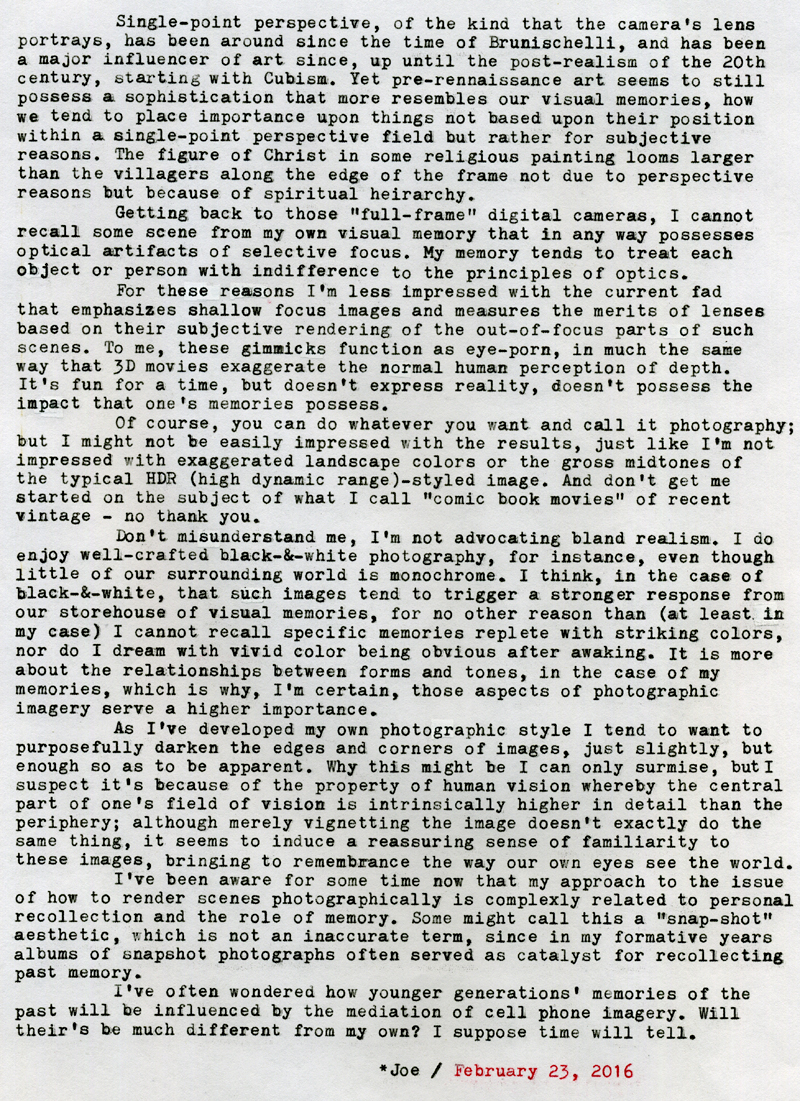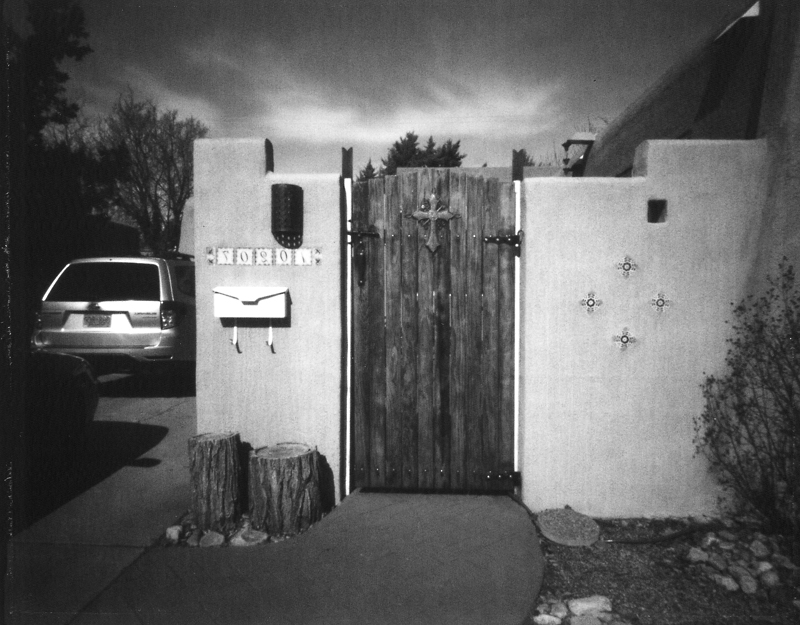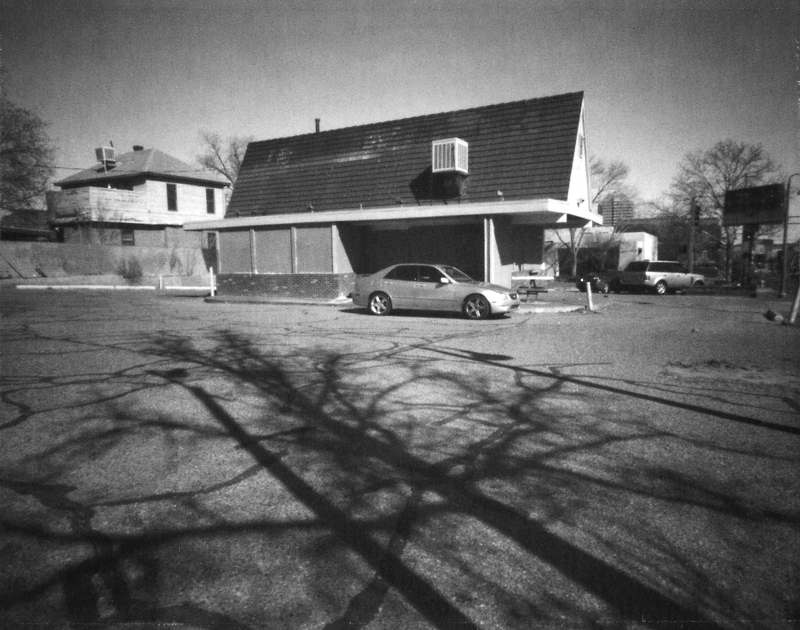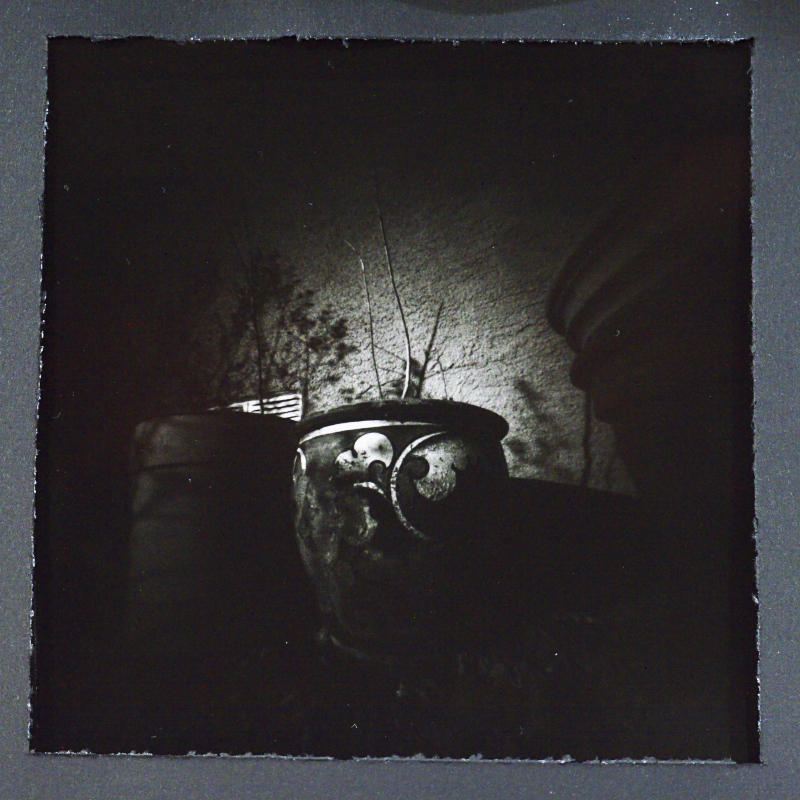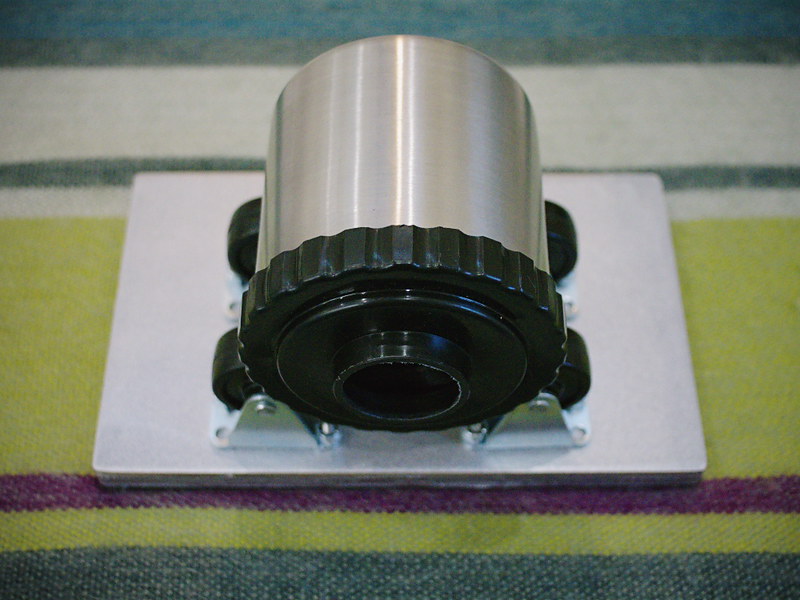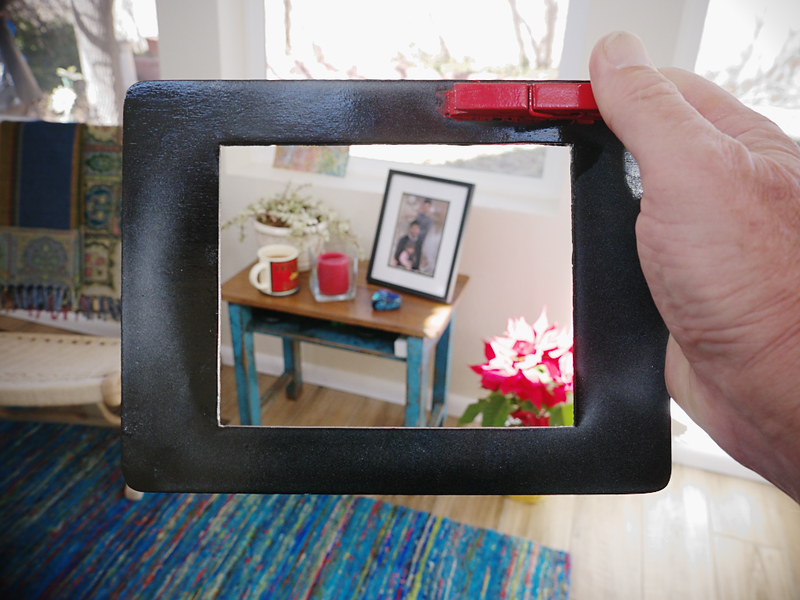
I've named this blog "Obscure Camera," not just as a play on the term "camera obscura" but also because at times I expect to discuss truly obscure photographic concepts. This article represents one of those times when we do get into the truly obscure or arcane - or bazaar, even.
In the decade following the September, 2001 terrorist attacks I, along with many others, became more aware of a backlash beginning to develop against public photography, simultaneous with an increase in government surveillance of the populace. This dichotomy between an increase in state surveillance and discouragement of public image-making steadily grew during the years around the Iraq war, to be partially abated only with the development of the ubiquitous camera-equipped cell phone, in the mid-2000s. Yet, the dichotomy continues to this day, currently manifested as a backlash against public street and drone photography, and their perceived abuses.
Because I was already interested in these disparate topics of public photography and state surveillance, it was natural that I might ponder a bit deeper their implications and hidden meanings.
What I came up with, several years ago, was a thought experiment, intended to explore the hypothesis that street photography is, in essence, an extension of one's personal gaze; that the photographic act is fundamentally one of direct observation, by a photographer, of a subject in public, with the camera as intermediary. The question I wished to unravel was whether public objection to street photography was an objection to the camera's capability to record, or to the human's desire to observe; do we object because we don't wish to be recorded, or because we don't want to be watched?. And is it a sin to record, or a sin to merely look?
I suspected it was the latter, since as a public we seem curiously resigned to the fact of increased government surveillance, even in this pseudo-democracy where there are systems in place, however ineffective, where our voices might be heard and redress made; instead we heap scorn upon our fellow citizens for expressing their own creativity through public photography. But why this dichotomy?
My thought experiment, intended to explore this question, involved the public act of being seen pretending to photograph others with a fake camera device. In so doing, it was to be part personal experiment and part performance art.
For the purposes of the experiment, I concocted a faux-camera device using a block of wood and various bits salvaged from a defunct Polaroid 600 camera. It looked just enough like a real camera to give someone pause, while closer inspection would reveal it to be obviously not a real camera at all. I considered it important that its appearance ride this razor's-thin edge between validity and falsehood, in order for the experiment's intention to succeed.
One important aspect of the camera's design (that I named the Like-A), was a clicker mechanism that would make a distinct sound, marking the decisive moment when a "faux-photograph" is being taken.
I thought about this project off and on,
blogged about it a bit, but really didn't pursue it any further.
Several years later my interest in this project revived, and I revisited it, having in the interim been additionally informed by the iPad/tablet computer revolution, and refashioned the Like-A into a picture frame-like viewing device, complete with clothespin-powered shutter clicker, whereby the "fauxtographer" would go out in public, frame up interesting compositions and "click" them directly into his cerebral cortex, the theory being that the convergence of a visual composition with some audible stimulation would mark a critically decisive moment, more likely to be reinforced into the fauxtographer's memory as a mental image of the scene just viewed, which I termed (for obvious reasons) the
Camera Cerebrum; a device intended to impart photograph-like images, wirelessly, directly into one's brain.
It is important to point out that, though this project was intended to involve an abstract kind of photography, and strictly in the public arena, the execution of it thus far has only been simulated - I have yet to go out in public with the express intention of being seen using the Camera Cerebrum framing device. But I
could at any moment; such is the nature of conceptual art. In my case, however, it has been more like conceptual-conceptual art.
It became obvious to me that for this project to succeed as an act of faux-image-making, it would have to not only be performed in public, but photographic documentation of the performance must be made, else it would remain merely hypothetical.
And so I've arrived at the point where I must decide to go out into some public venue equipped with the Camera Cerebrum, accompanied by a camera crew to document what might ensue.
It is important here to clarify my intentions. I don't desire to become purposefully controversial, or push peoples' buttons just for the sake of inciting some reaction, or merely to seek attention, for my personality naturally avoids confrontation. I'm truly interested in how photography works in the public context, the interplay between the subject, the camera and the photographer; I've long harbored the suspicion that these interrelationships are much more complex than one might otherwise think.
However uncomfortable a person such as I might be about being observed photographing others in public without their permission, doing so using an obviously pretend device like the Camera Cerebrum brings with it another set of issues, pertaining to the veracity of one's intentions. Even for someone objecting to having their picture taken, there is at least some small comfort in knowing that the photographer is employing standard photographic equipment and techniques. But what are they to think when it becomes obvious that photographs, as we commonly understand them, are not being made here at all, but rather it seems to be some picture taking-like ritual being acted out?
Let's approach this scenario from a different angle. What this device doesn't do is function as an actual image-recording device; but what if it did, and looked so strange as to be unrecognizable as such by the common person on the street? Would their reaction remain the same? I assume so. How are they to know that my little framing device with attached clothespin doesn't actually contain some micro-electronics?
On the other hand, what if I were to conduct this experiment using a real film camera, empty of film? Or a digital camera minus the memory card? People's expectations are based on past experience. It would appear, for all intentions, as if their images
were being captured; and their reactions would be just as you'd expect, depending on their personality, and tolerance for being an involuntary participant in such activities.
But the whole point of this framing device is to function as a synthesis between apparent-picture-recording-apparatus and mere-window-for-gazing-out-at-the-world, where the observed subject might not initially be certain of which it is; the resulting ambiguity being entirely intentional. It is up to them to decide what it is exactly that triggers their own objections to perhaps-being-recorded or perhaps-being-observed, whereas my role is to merely help define some clear distinctions between the two.
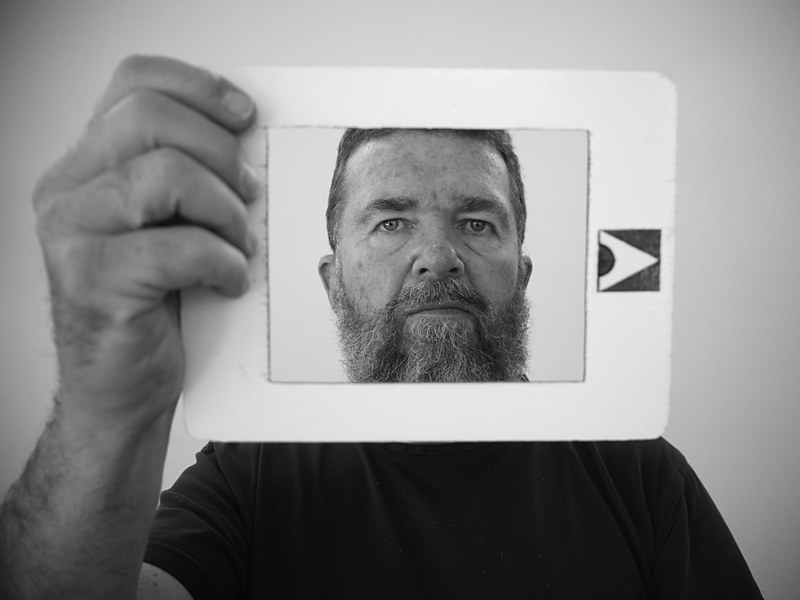
If we (in the United States) are assumed the right to photograph subjects in public, does that also confer upon us the right to stare at others in public? Absent a legal education, it's hard to say. Common sense dictates that such behavior in the extreme is frowned upon, depending upon the context. What if the "looker" were equipped with paint brush and easel, or sketch pad and pencil, would it matter any more or less?
There are many gray areas that this experiment could serve to explore, the role of both photography and observation in an open society.
Personally, I don't intend on being the subject of a Supreme Court test case, however curious my photographic theorizing might be. And so, unless I suddenly work up enough courage to conduct a bit of public "frame-viewing," it will have to remain a hypothetical question.
So, What's the whole point of this useless experiment? you might be thinking. Just to get a reaction? Just to appear clever or original? If that were the case, I'd deservedly get whatever scorn or contempt might be thrown my way.
But I'd like to present for your consideration a more honorable intention, that being the mere study of visual composition itself. Suppose my interest were in some hybrid artistic approach between painting and photography, where the study of the kinds of compositions normally found within the public venue requires some framing device be utilized? What if my interest were purely in the art of composition itself, wherever that might be found? What if I were storing up in my mind's eye a treasure-trove of visual scenery, to be recollected at a later time for some other noble, artistic purpose, like sketching or painting? Would that be so harmful? It doesn't sound like it would be, necessarily. And if not, then public photography itself shouldn't be, either. And yet, reality is never that simple. And that's my point precisely.
I am not naive; I understand why there might be objections to both recording
or looking at strangers in public, certainly for the case involving children, or women, because of the fear our culture harbors toward pedophilia or sexual titillation. There are also fears of being blackmailed or otherwise exploited, due to one's public image being misused. I don't expect this project, even if it were fully realized, will unravel these issues at all, or lessen their severity within our culture; nor will our fear of being observed by others be abated, for much of that is biologically programmed. What this project does illustrate, if it does nothing else, is to demonstrate the power of image-making and observation, and the caution that those who wield it must demonstrate.
Post-Script: I did have a chance to try out this framing device in a pseudo-public setting, that being an experimental cinema production, put on by
Basement Films and hosted by the
Guild Cinema. Interestingly, the subject of the show involved the role of memory and photography, and so my happening to bring the camera cerebrum to the show was fortuitous. I had opportunity to try recording "cerebrograms" on several subjects, as well as explaining my theory behind the device to a number of people. While I'm not so certain that I convinced any of them to go out tomorrow and make one for themselves (developing a gathering of followers is not high on my wish list), they were at least polite enough to listen.
Of course, a specialist audience of experimental film adepts is hardly the same thing as truly engaging strangers on the street, but it's a solid first step.
As to the question of whether the memory-recording feature of the device actually works, there is one such image, of a Basement Films member outside the theater before the show, that I can still distinctly remember.
